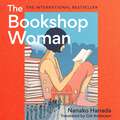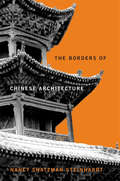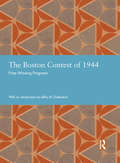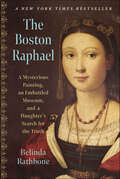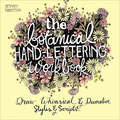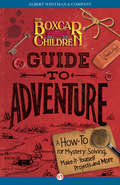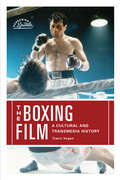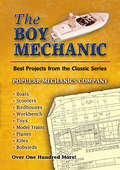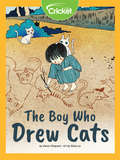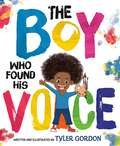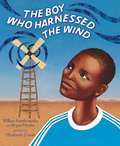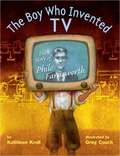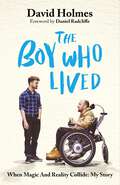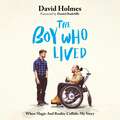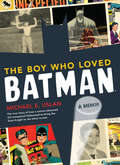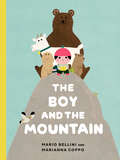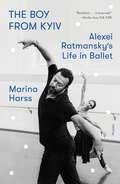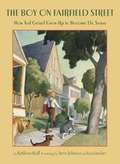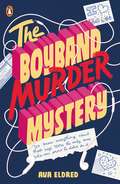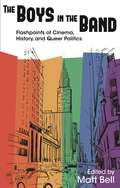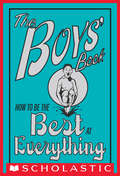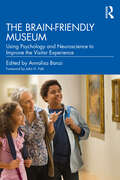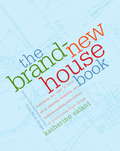- Table View
- List View
The Bookshop Woman
by Nanako HanadaTHE BOOKSHOP WOMAN IS A LOVE STORY, A LOVE STORY ABOUT BOOKSNanako Hanada's life has not just flatlined, it's hit rock bottom... Recently separated from her husband, she is living between 4-hour capsule hostels, pokey internet cafes and bookshop floors. Her work is going no better - sales at the eccentric Village Vanguard bookstore in Tokyo, which Nanako manages, are dwindling. As Nanako's life falls apart, reading books is the only thing keeping her alive.That's until Nanako joins an online meet-up site which offers 30 minutes with someone you'll never see again. Describing herself as a sexy bookseller she offers strangers 'the book that will change their life' in exchange for a meeting. In the year that follows, Nanako meets hundreds of people, some of whom want more than just a book...Acerbic and self-knowing, The Bookshop Woman is a soul-soothing story of a bookseller's self-discovery and an ode to the joy of reading. Offering a glimpse into bookselling in Japan and the quirky side of Tokyo and its people, this is a story of how books can help us forge connection with others and lead us to ourselves.This is a story about the beauty of climbing into a book, free diving into its pages, and then resurfacing on the last page, ready to breathe a different kind of air...
The Borders of Chinese Architecture
by Nancy Shatzman SteinhardtAn internationally acclaimed expert explains why Chinese-style architecture has remained so consistent for two thousand years, no matter where it is built. For the last two millennia, an overwhelming number of Chinese buildings have been elevated on platforms, supported by pillars, and covered by ceramic-tile roofs. Less obvious features, like the brackets connecting the pillars to roof frames, also have been remarkably constant. What makes the shared features more significant, however, is that they are present in Buddhist, Daoist, Confucian, and Islamic milieus; residential, funerary, and garden structures; in Japan, Korea, Mongolia, and elsewhere. How did Chinese-style architecture maintain such standardization for so long, even beyond China’s borders? Nancy Shatzman Steinhardt examines the essential features of Chinese architecture and its global transmission and translation from the predynastic age to the eighteenth century. Across myriad political, social, and cultural contexts within China and throughout East Asia, certain design and construction principles endured. Builders never abandoned perishable wood in favor of more permanent building materials, even though Chinese engineers knew how to make brick and stone structures in the last millennium BCE. Chinese architecture the world over is also distinctive in that it was invariably accomplished by anonymous craftsmen. And Chinese buildings held consistently to the plan of the four-sided enclosure, which both afforded privacy and differentiated sacred interior space from an exterior understood as the sphere of profane activity. Finally, Chinese-style buildings have always and everywhere been organized along straight lines. Taking note of these and other fascinating uniformities, The Borders of Chinese Architecture offers an accessible and authoritative overview of a tradition studiously preserved across time and space.
The Boston Contest of 1944: Prize Winning Programs (Studies in International Planning History)
by Jeffry M. DiefendorfDuring World War II, many European government authorities and planners believed that the damage caused by bombing constituted a great opportunity to transform their cities. Even as the fighting continued, a great many plans were drawn up, and this has been the subject of much scholarship. However, what is often overlooked is wartime planning in cities not damaged in the war. United States cities were not bombed, but in Boston, one of its leading cities, the last years of the war brought a major effort to encourage both new plans to modernize the city and also means of implementing those plans. The wartime initiative to transform Boston had several sources. Both the Great Depression and the war had led to major measures by the federal government to try to deal with fiscal challenges and the need for new housing for the many people who relocated during the war because of the creation of new industries to help the war effort. Boston hoped it could benefit from these measures. Moreover, in the late 1930s, Harvard University had become a key residence for figures important in modernist planning, including Joseph Hudnut, Walter Gropius and Martin Wagner. These factors combined in 1944 to inspire what was called The Boston Contest. Its goal was to suggest solutions to many problems found in the metropolitan area. These issues included commercial and industrial developments, housing, transportation, education, recreation, welfare, urban finances, metropolitan government, and citizen participation in solving problems. This book, published in 1945 contains the top 3 prize winning entries and excerpts from 9 of the other nearly 100 entries. It gives a fascinating insight into the developing ideas of urban planning in the United States at a critical juncture.
The Boston Raphael: A Mysterious Painting, an Embattled Museum in an Era of Change and a Daughter's Search for the Truth
by Belinda RathboneThe discovery of a previously unknown painting by an Italian Renaissance master, and how it went from media sensation to career-ending scandal. On the eve of its centennial celebrations in December 1969, the Boston Museum of Fine Arts announced the acquisition of an unknown and uncatalogued painting attributed to Raphael. Boston&’s coup made headlines around the world. Soon afterward, an Italian art sleuth began investigating the details of the painting&’s export from Italy, challenged the museum&’s right to ownership. Simultaneously, experts on both sides of the Atlantic lined up to debate the artwork&’s very authenticity. While these contests played themselves out on the international stage, the crisis deepened within the museum as its charismatic director, Perry T. Rathbone, faced the most challenging crossroads of his thirty-year career. The facts about the forces that converged on the museum, and how they led to Rathbone&’s resignation as director, is only now fully revealed in this compelling, behind-the-scenes story that reveals how the art world, media, and museums work. This is for anyone who relishes stories of the business of art.Praise for The Boston Raphael &“Perhaps the most exciting book on the art world since Jonathan Harr&’s The Lost Painting.&” ―The Boston Globe &“In the compelling story of her father, Perry Rathbone, and the years when he was the elegant and revolutionary director of the Boston Museum of Fine Arts, Belinda Rathbone evokes our country&’s most glamorous years . . . The Boston Raphael is a combination of personal memoir and rich, deliciously detailed history that will keep you turning the pages.&” ―Susan Cheever
The Botanical Hand Lettering Workbook: Draw Whimsical & Decorative Styles & Scripts
by Bethany RobertsonForeword INDIE Silver Winner for Crafts & Hobbies. Create exquisite hand-lettered works of art by learning how to draw ornamental fonts and flourishes.Learn the art of hand-lettering. This step-by-step workbook teaches you how to craft pretty letters and flowers of all sorts. Use your newfound botanical lettering skills to make cards, wedding invitations, banners, tags, paper bouquets, and other fun projects.“If you are someone who wants to create something beautiful with doodling and drawing, this book will inspire you and help you to learn the skills. I LOVED it!” —Tea Rose Home
The Boxcar Children Guide to Adventure
by Gertrude Chandler Warner The Boxcar ChildrenThe Boxcar Children have long been known for being creative and resourceful. This hardcover book is filled with fun how-to guides for everyday adventures. It includes tips and tricks for mystery solving (how to make invisible ink and create secret codes), travel (how to pack a suitcase; how to take great snapshots), and enjoying the great outdoors. Each of the four Boxcar Children has his or her own section--practical advice from Jessie, a "roughing it" guide from Henry, crafts and art projects from Violet, and recipes from Benny! A great gift for Boxcar fans.
The Boxing Film: A Cultural and Transmedia History (Screening Sports)
by Travis VoganAs one of popular culture’s most popular arenas, sports are often the subject of cinematic storytelling. But boxing films are special. There are more movies about boxing, by a healthy margin, than any other sport, and boxing accompanied and aided the medium’s late 19th century emergence as a popular mass entertainment. Many of cinema’s most celebrated directors—from Oscar Micheaux to Martin Scorsese—made boxing films. And while the production of other types of sports movies generally corresponds with the current popularity of their subject, boxing films continue to be made regularly even after the sport has wilted from its once prominent position in the sports hierarchy of the United States. From Edison’s Leonard-Cushing Fight to The Joe Louis Story, Rocky and beyond, this book explores why boxing has so consistently fascinated cinema, and popular media culture more generally, by tracing how boxing movies inform the sport’s meanings and uses from the late 19th century to the early 21st century.
The Boy Mechanic: Best Projects from the Classic Popular Mechanics Series (Dover Children's Activity Books)
by Popular MechanicsThese vintage craftwork projects date from a simpler time, when people were more likely to make their own amusements rather than buy them. Drawn from Popular Mechanics magazines of the 1940s, The Boy Mechanic features a tremendous variety of well-illustrated projects. They range from the practical to the fanciful, comprising everyday items such as birdhouses and bean shooters as well as unusual ventures, including ice gliders and magnetic theaters.Girls, boys, and adults of both genders will appreciate these engaging projects, which require only common tools and inexpensive supplies. Whether used as a manual or simply read for the pleasure of a look back at the good old days, this book promises hours of enjoyment.
The Boy Who Drew Cats
by Aaron ShepardJoji tries to find his place in the world with his favorite skill, drawing cats! Will he find where he belongs and what he is meant to do with his life? There’s just not enough time to draw cats when you're trying to help on your family’s farm or learning to become a priest at one of the local temples. Is there a job that will let him do what he loves?
The Boy Who Found His Voice
by Tyler GordonFrom teen activist and artistic prodigy Tyler Gordon comes a heartwarming picture book inspired by his own life about a boy with a speech difference who learns the power of self-expression through art.There once was a young boy who had trouble with words. He paused and stuttered and stammered, which made school really tough. But with encouragement from his mom and a paintbrush in hand, he learns that finding your voice isn’t about being perfect—it’s about being true to yourself.For fans of I Talk Like a River and Amanda Gorman, The Boy Who Found His Voice is a joyful and empowering testament to art, empathy, and having self-confidence even in the face of doubt.Don't miss Tyler Gordon's bold picture book debut We Can: Portraits of Power.
The Boy Who Harnessed The Wind
by William Kamkwamba Bryan Mealer Elizabeth ZunonWhen fourteen-year-old William Kamkwamba's Malawi village was hit by a drought, everyone's crops began to fail. Without enough money for food, let alone school, William spent his days in the library... <P> and figured out how to bring electricity to his village. Persevering against the odds, William built a functioning windmill out of junkyard scraps, and thus became the local hero who harnessed the wind. Lyrically told and gloriously illustrated, this story will inspire many as it shows how - even in the worst of times - a great idea and a lot of hard work can still rock the world.
The Boy Who Invented TV: The Story of Philo Farnsworth
by Kathleen KrullAn inspiring true story of a boy genius. Plowing a potato field in 1920, a 14-year-old farm boy from Idaho saw in the parallel rows of overturned earth a way to "make pictures fly through the air." This boy was not a magician; he was a scientific genius and just eight years later he made his brainstorm in the potato field a reality by transmitting the world's first television image. This fascinating picture-book biography of Philo Farnsworth covers his early interest in machines and electricity, leading up to how he put it all together in one of the greatest inventions of the 20th century. The author's afterword discusses the lawsuit Farnsworth waged and won against RCA when his high school science teacher testified that Philo's invention of television was years before RCA's.
The Boy Who Lived: When Magic and Reality Collide: my story, with a foreword by Daniel Radcliffe
by David HolmesTHE POWERFUL MEMOIR FROM HARRY POTTER STUNTMAN DAVID HOLMES, WITH A FOREWORD BY DANIEL RADCLIFFE: AVAILABLE TO PRE-ORDER NOW! As stunt double to Daniel Radcliffe in the Harry Potter film franchise, stuntman David Holmes helped to move J.K. Rowling's era-defining story from the page to the big screen. His work as a real-life Fall Guy enabled him to create some of the most memorable action sequences in the Wizarding World, as he became the first person ever to play Quidditch. In living his own hero's journey, David was also one of only a handful of people to have worn the iconic wizard's cape, glasses and scar in front of the cameras.That is, until an accident changed his life forever.During the making of Harry Potter and the Deathly Hallows: Part 1, David broke his neck in a stunt rehearsal and was instantly paralysed. From talented junior gymnast and stunt prodigy to fully qualified Hollywood stuntman, his story is a brutally honest portrait of a man who lost everything but found different ways to reimagine new possibilities with love, friendship and optimism - and he later co-created a BAFTA-nominated documentary about his life. David's behind-the-scenes look at one of the biggest film series of all time is both jaw-dropping and hilarious.Powerful and emotional, his is a story of hope and vulnerability and paints a picture of what it truly takes to rebuild a life and become The Boy Who Lived.
The Boy Who Lived: When Magic and Reality Collide: my story, with a foreword by Daniel Radcliffe
by David HolmesTHE INSPIRATIONAL MEMOIR FROM HARRY POTTER STUNTMAN DAVID HOLMES, WITH A FOREWORD BY DANIEL RADCLIFFE: PERFECT FOR HARRY POTTER FANS As stunt double to Daniel Radcliffe in the Harry Potter film franchise, stuntman David Holmes helped to move J.K. Rowling's era-defining story from the page to the big screen. His work as a real-life Fall Guy enabled him to create some of the most memorable action sequences in the Wizarding World, as he became the first person ever to play Quidditch. In living his own hero's journey, David was also one of only a handful of people to have worn the iconic wizard's cape, glasses and scar in front of the cameras.That is, until an accident changed his life forever.During the making of Harry Potter and the Deathly Hallows: Part 1, David broke his neck in a stunt rehearsal and was instantly paralysed. From talented junior gymnast and stunt prodigy to fully qualified Hollywood stuntman, his story is a brutally honest portrait of a man who lost everything but found different ways to reimagine new possibilities with love, friendship and optimism - and he later co-created a BAFTA-nominated documentary about his life. David's behind-the-scenes look at one of the biggest film series of all time is both jaw-dropping and hilarious.Powerful and emotional, his is a story of hope and vulnerability and paints a picture of what it truly takes to rebuild a life and become The Boy Who Lived. --------------'Brutally honest, utterly engaging, deeply sad yet incredibly uplifting. A must-read.' ⭐⭐⭐⭐⭐ 'A million stars for this incredible book.' ⭐⭐⭐⭐⭐ 'A beautifully authentic story and I'm a better person for having read it.' ⭐⭐⭐⭐⭐ 'I'm not normally a reader, but I managed to finish this book in two days. A spectacular piece of writing!'⭐⭐⭐⭐⭐
The Boy Who Lived: When Magic and Reality Collide: my story, with a foreword by Daniel Radcliffe
by David HolmesTHE INSPIRATIONAL MEMOIR FROM HARRY POTTER STUNTMAN DAVID HOLMES: PERFECT FOR HARRY POTTER FANS.NARRATED BY THE AUTHOR, WITH A FOREWORD BY DANIEL RADCLIFFE NARRATED BY TOBY LAURENCE.As stunt double to Daniel Radcliffe in the Harry Potter film franchise, stuntman David Holmes helped to move J.K. Rowling's era-defining story from the page to the big screen. His work as a real-life Fall Guy enabled him to create some of the most memorable action sequences in the Wizarding World, as he became the first person ever to play Quidditch. In living his own hero's journey, David was also one of only a handful of people to have worn the iconic wizard's cape, glasses and scar in front of the cameras.That is, until an accident changed his life forever.During the making of Harry Potter and the Deathly Hallows: Part 1, David broke his neck in a stunt rehearsal and was instantly paralysed. From talented junior gymnast and stunt prodigy to fully qualified Hollywood stuntman, his story is a brutally honest portrait of a man who lost everything but found different ways to reimagine new possibilities with love, friendship and optimism - and he later co-created a BAFTA-nominated documentary about his life. David's behind-the-scenes look at one of the biggest film series of all time is both jaw-dropping and hilarious.Powerful and emotional, his is a story of hope and vulnerability and paints a picture of what it truly takes to rebuild a life and become The Boy Who Lived.
The Boy Who Loved Batman: A Memoir
by Michael E. UslanThe Batman movie producer reveals how his childhood love of comic books became a lifelong passion and dream job in this illustrated memoir.Is any superhero cooler than Batman? He’s a crime-fighting vigilante with a tragic past, a lawless attitude, and a seemingly endless supply of high-tech gadgetry. In this fully illustrated memoir, author Michael Uslan recalls his journey from early childhood fandom through to the decades he spent on a caped crusade of his own: to bring Batman to the silver screen as the dark, serious character he was at heart. Uslan’s story traces his path from the wilds of New Jersey to the limelight of Hollywood, following his work as Executive Producer on every Batman film from Tim Burton’s 1989 re-envisioning to 2012’s The Dark Knight Rises. Through it all, he helped to create one of the most successful pop culture franchises of all time.“Don’t miss this spellbinding tale of one man who saw what Batman was—and realized what he could become.” —Stan Lee
The Boy Who Wanted To Be A Dancer
by Rod GambassiThe story of a boy who listens to his heart. By following his dreams, he inspires others to do the same.
The Boy and the Mountain
by Mario BelliniA boy sets off to draw a mountain in this thoughtful exploration of art and the creative process. For fans of Hike by Pete Oswald.A little boy, who is a keen artist, becomes obsessed with a mountain he can see from his house. One day, he tries to draw the mountain, but his drawing doesn't look anything like it, so he decides that he has to take a closer look. He sets off with his dog, drawing what he sees along the way, and making a growing collection of animal companions during his hike. But when he finally reaches the mountain, the boy makes a discovery about the importance of perspective and friendship which changes how he views the world around him.Both a powerful exploration of art and a sweet ode to hiking, this picture book from acclaimed author-illustrator Marianna Coppo and her partner, Mario Bellini, will inspire readers young and old to stop and take the time to appreciate both the world around them and others who inhabit it.
The Boy from Kyiv: Alexei Ratmansky's Life in Ballet
by Marina HarssNamed a Best Book of the Year by NPR and The New YorkerThe Boy from Kyiv is the life story of Alexei Ratmansky, the most celebrated ballet choreographer of our time.“A revelatory book about how [Ratmansky] evolved into the internationally sought-after choreographer of the moment . . . A must-read.” — Martha Anne Toll, NPRAlexei Ratmansky is transforming ballet for the twenty-first century. An artist of daring imagination, the choreographer has created breathtakingly original works for the world’s most revered companies. He has fashioned a singular approach to balletic storytelling that bridges the space between narrative and abstraction and heightens ambiguity and surprise on the stage. He has boldly restored great centuries-old ballets to their former glory, combining archival research with his own choreographic genius to retrieve detail and color once lost to the ages. And above all, he is renowned for fusing the Western and Eastern ballet traditions, and for drawing on the visual arts, literature, music, film, and beyond with inspired vim, to forge a style that is vibrant, eclectic, and utterly new: one that promises to leave an indelible mark on this venerable art form.But before Ratmansky was the artistic director of the Bolshoi Ballet, the resident choreographer at American Ballet Theatre, the artist in residence at New York City Ballet, and generally, as The New Yorker has it, “the most sought-after man in ballet,” he was just a boy from Kyiv, sneaking into the ballet at night, concocting his own juvenile adaptations of novels and stories, and dreaming up new possibilities for bodies in motion.In The Boy from Kyiv, the first biography of this groundbreaking artist, the celebrated dance writer Marina Harss takes us behind the curtain to reveal Ratmansky’s fascinating life, from his Soviet boyhood through his globe-spanning career. Over a decade in the making, this biography arrives at a pivotal moment in Ratmansky’s journey, one that has seen him painfully and publicly break ties with Russia, the country in which he made his name, in solidarity with his native Ukraine, and take on a new challenge at the storied New York City Ballet. Told with the lyricism, drama, and verve that befit its subject, The Boy from Kyiv is a riveting account of this major artist’s ascent to the peaks of his field, a mesmerizing study of creativity in action, and a triumphant testament to ballet’s enduring vitality.
The Boy on Fairfield Street: How Ted Geisel Grew Up to Become Dr. Seuss
by Kathleen KrullIntroduces the life of renowned children's book author and illustrator Ted Geisel, popularly known as Dr. Seuss, focusing on his childhood and youth in Springfield, Massachusetts.
The Boyband Murder Mystery
by Ava Eldred'I have long believed that loving a boyband brings with it a wealth of transferable skills, but I'd never imagined solving a murder would be one of them...'Harri and her best friends worship Half Light - an internationally famous boyband. When frontman Frankie is arrested on suspicion of murdering his oldest friend Evan, Harri feels like her world's about to fall apart. But quickly she realises that she - and all the other Half Light superfans out there - know and understand much more about these boys than any detective ever could.Now she's rallying a fangirl army to prove Frankie's innocence - and to show the world that you should never underestimate a teenage girl with a passion...
The Boys in the Band: Flashpoints of Cinema, History, and Queer Politics
by Matt BellThe Boys in the Band’s debut was revolutionary for its fictional but frank presentation of a male homosexual subculture in Manhattan. Based on Mart Crowley’s hit Off-Broadway play from 1968, the film’s two-hour running time approximates real time, unfolding at a birthday party attended by nine men whose language, clothing, and behavior evoke a range of urban gay “types.” Although various popular critics, historians, and film scholars over the years have offered cursory acknowledgment of the film’s importance, more substantive research and analysis have been woefully lacking. The film’s neglect among academics belies a rich and rewarding object of study. The Boys in the Band merits not only the close reading that should accompany such a well-made text but also recognition as a landmark almost ideally situated to orient us amid the highly complex, shifting cultural terrain it occupied upon its release—and has occupied since. The scholars assembled here bring an invigorating variety of methods to their considerations of this singular film. Coming from a wide range of academic disciplines, they pose and answer questions about the film in remarkably different ways. Cultural analysis, archival research, interviews, study of film traditions, and theoretical framing intensify their revelatory readings of the film. Many of the essays take inventive approaches to longstanding debates about identity politics, and together they engage with current academic work across a variety of fields that include queer theory, film theory, gender studies, race and ethnic studies, and Marxist theory. Addressing The Boys in the Band from multiple perspectives, these essays identify and draw out the film’s latent flashpoints—aspects of the film that express the historical, cinematic, and queer-political crises not only of its own time, but also of today. The Boys in the Band is an accessible touchstone text in both queer studies and film studies. Scholars and students working in the disciplines of film studies, queer studies, history, theater, and sociology will surely find the book invaluable and a shaping influence on these fields in the coming years.
The Boys' Book: How to Be the Best at Everything
by Scholastic Guy Macdonald Dominique Enright Nikalas CatlowA spiffy guide to anything and everything a boy needs to know! How to do almost anything in one handy book. Found yourself in a sticky situation? Inside you'll learn how to escape quicksand (p. 40), build a raft (p.41), start a survival fire (p.99), or fly a helicopter (p. 11). Want to impress your friends? Now you can rip a phonebook in half (p. 35), hypnotize a chicken (p. 56), or read their minds (p. 73). Boring Saturday afternoon? Not anymore when you find out how to make a waterbomb (p. 79), a boomerang (p. 95), or a volcano (p. 88). And loads of other keen things you need to know how to do!
The Brain-Friendly Museum: Using Psychology and Neuroscience to Improve the Visitor Experience
by Annalisa Banzi John H. FalkThe Brain-Friendly Museum proposes an innovative approach to experiencing and enjoying the museum environment in new ways, based on the systematic application of cognitive psychology and neuroscience. Providing practical guidance on navigating and thinking about museums in different ways, the book is designed to help develop more fulfilling visitor experiences. It explores our cognitive processes and emotions, and how they can be used to engage with and enjoy the museum environment, regardless of the visitor’s background, language, or culture. The book considers core cognitive processes, including memory, attention, and perception, and how they can successfully be applied to the museum environment, for example, in creating more effective displays. Using evidence-based examples throughout, the book advocates for a wellbeing approach improving visitor experience, and one that is grounded in research from psychology and neuroscience. This book is a must-read for all museum practitioners and psychologists interested in the relationship between cultural heritage, psychology, and neuroscience. It will also be of great interest to art therapists, neuroscientists, university students, museum stakeholders, and museum lovers.
The Brand-New House Book
by Katherine SalantFrom the first vague ideas to the finished structure, building a brand-new house presents you with thousands of choices -- and possible pitfalls. Yet there's no single expert you can turn to at every stage and ask, "What do I do?" Until now. This definitive reference will help you:* Figure out how much house you need, and how much you can afford* Choose among types of builders, communities, and lots* Negotiate the offer, financing, contract, and closing* Assess options and upgrades -- which are worth it and which are not* Understand windows, flooring, kitchens, landscaping, and scores of other issues* Work with real-estate agents, architects, site superintendents, home inspectors, attorneys -- your whole team, which may consist of dozens of playersThe Brand-New House Book distills the most crucial advice from hundreds of experts -- from the broad strokes such as bankers on mortgages, interior designers on colors, or arborists on trees to fine-tuning such as cleaners on carpets, movers on staircases, or landscape architects on drainage, every issue is addressed. Thorough and authoritative, yet completely accessible, this book is the most valuable investment you can make to ensure that you bypass the potential nightmares and ultimately come home to the house of your dreams.
